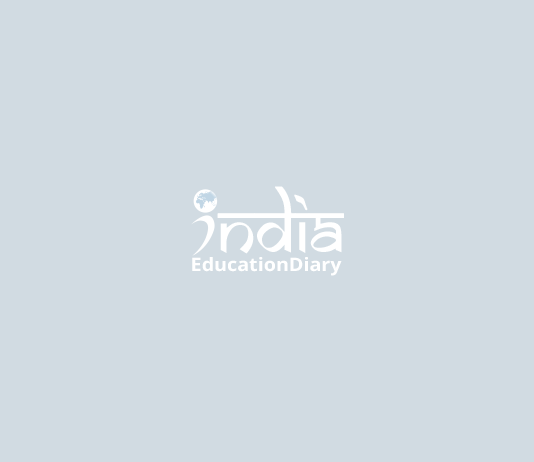Hyderabad: A special session for media professionals introducing research technologies relevant to media and journalists specifically on ‘data journalism” held at IIIT-Hyderabad Campus at Gachibowli
This special session on Data Journalism held as part of the R&D Showcase 2017, where, Chitti Panthulu, Editor in Chief of Veooz spoke on “Media at the crossroads” New Realities for a New Course”. Founder Gramener, Ganes Kesari spoke about New Age data Visualization tools. Prof. Vasudeva Verma, Dean-R&D at IIIT Hyderabad spoke on Research & Technology trends for data Journalism. He spoke about leveraging natural language processing, information extraction, machine learning and artificial learning etc.
Prof. Vasudeva Verma, Dean-R&D at IIIT Hyderabad gave evolution of media right from the days of Gutenberg’s printing press to till date. He spoke about fake news menace, which is becoming a major challenge. Now the world is confronted how to handle this menace, he said. How do you distinguish genuine new from the fake news. He gave few internet resources or tools that help people differentiate between fake and genuine news. And summed up that “Content is the King” in an internet era.
Picking up from where Prof. Vasudeva Verma left, Chitti Panthulu, the veteran media professional said, not just Content is king, but the “Original Content is the king” he said. He gave a macro view of media advertising revenues globally as well as India. Globally the media ad revenues stood at 1.6 trillion American dollars in 2015. Which is going to go up to 2.1 trillion by 2019 registering 5.1 CAGR, he said.
The Indian media revenues stood at $ 8.1billion in 2016, which has gone up from 7.4 billion in the previous year by registering 13.3% growth, informed Chitti Panthulu. The Print Media revenues are estimated at $ 4.76 billion in the year 2016, he informed
People are still reading newspapers in India, where as it is declining in western countries. Language readership of the print media is going up in India but, English media is registering decline in its readership. Digital is disrupting, he added. Mobile ads are the largest category, Chitti Panthulu said.
Vertical Videos will occupy centre stage, Chittipanthulu informed
The time spent in reading newspaper now has come down drastically. Wireless broadband is the way to go. India stands 5th in terms of mobile internet usage. News is now social and mobile. Reader generated newspapers, Data Driven Journalism, BOTS in the Newsroom, FB 360 and YouTube 360 are some of the new trends, Chitti Panthulu informed.
There is going to be premium on good reporting. Video reporting is going to be centre stage, Chitti Panthulu told 200 plus gathering.
Speaking further he added that the average age in the newsrooms is coming down. Experienced person is going to be discounted now. We have to confront fake news, he told. Print Media has to rethink about their business model, he told.
Ganes Kesar, while speaking on New Age Data Visualization tools, said Data Visualization is a transversal discipline which harnesses the immense power of visual communication in order to easily make sense of data informed Ganes Kesari. Applying Data Visualization for journalism, Visual Data Journalism can help a journalist simplify and tell a complex story through engaging info graphics. Data-driven journalism is the future to communicate effectively and in a concise manner, he added.
The key challenges to media are Data Literacy, Tech Tools Adaptation and re-architecting the newsroom. He gave few examples how new and interesting stories can be developed by using Data and gave an example of birth days citiznes in USA. When the data of the birth dates of the people was mined, they found some interesting insights such as more people were born in the months starting from July to October. This was planned to suit the school schedules. It is also found that not many were born on 13th of any month. In India more people were born in the months of April to July. The kids born on 1,5, 10 and 15th dates are scored lower marks in their exams, he said. By using data and these tools, you can tell a story in more intereting way. You can tell the story in valuable manner, he told the journalists.
There are several powerful public tools to aid with the process workflow of: data sourcing – curation – structuring – analysis – visualisation – story telling. And he suggested a useful list to start with.
Some of the tools he suggested were
Sourcing data: Scraperwiki, Public APIs of sites (ex. Twitter, Facebook, Google)
Cleaning data: Open refine, Tabula
Analysis: MS Excel, RVisualisation: D3.js, Google charts
Prof. Vasudeva Verma, highlighted few research projects which are under way in IIIT-H. He spoke about Machine Translations among Indian languages. Cross Language News Access, Individualization of news, News Snacks etc, he explained. He also spoke about intelligent newspapers which can talk, sound and blink. You paper will talk to you.
Replying to a question, Chittipanthulu said, Journalists need to compete with Corporate Channels, who are creating their own channels to disseminate their company news. They are creating their own stories. Honeywell, Accenture are some of the corporates got into this, he said.

